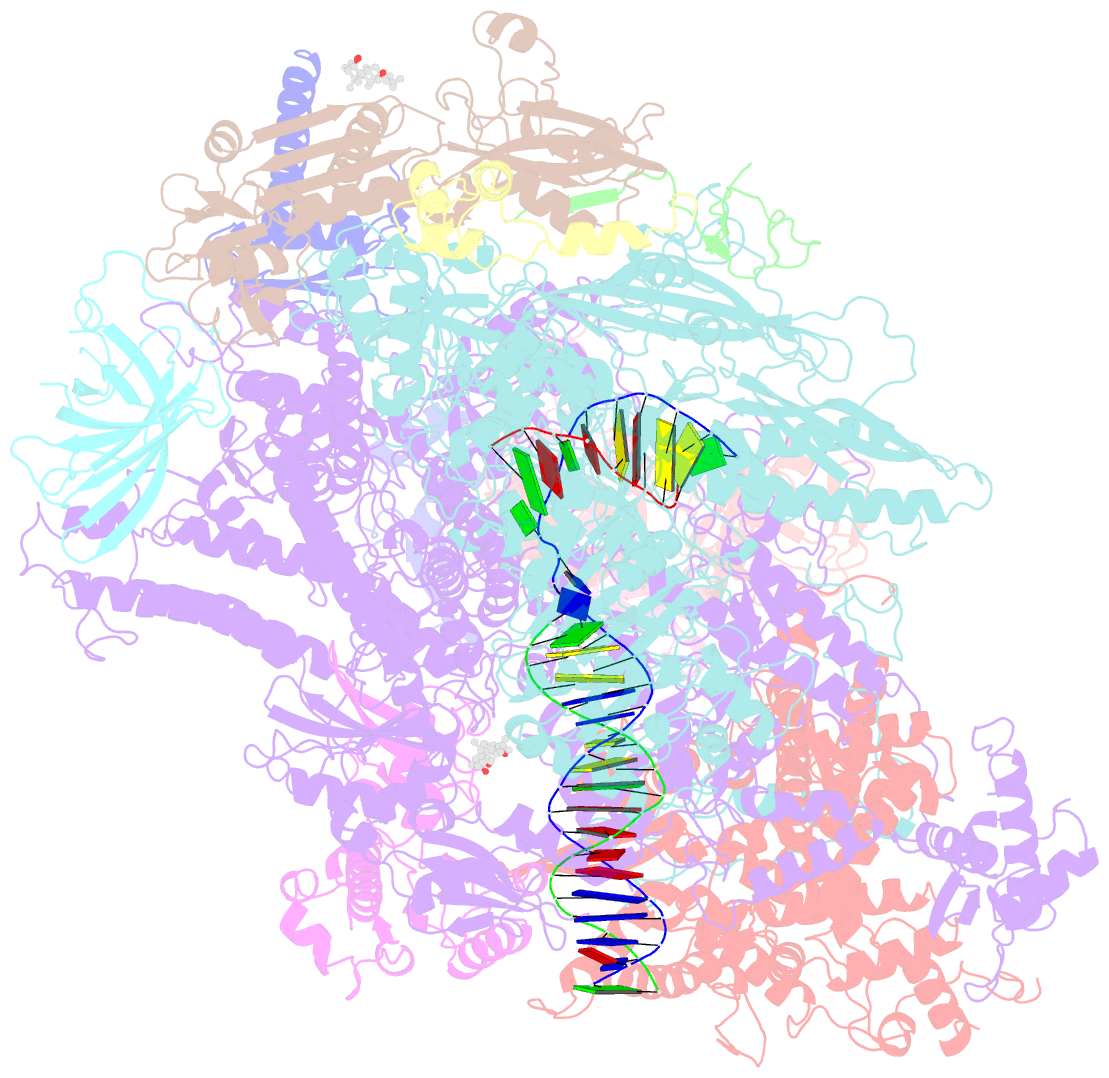Summary information and primary citation
- PDB-id
- 7z1n; SNAP-derived features in text and JSON formats;
DNAproDB
- Class
- transcription
- Method
- cryo-EM (3.9 Å)
- Summary
- Structure of yeast RNA polymerase iii delta c53-c37-c11
- Reference
- Girbig M, Xie J, Grotsch H, Libri D, Porrua O, Muller CW (2022): "Architecture of the yeast Pol III pre-termination complex and pausing mechanism on poly(dT) termination signals." Cell Rep, 40, 111316. doi: 10.1016/j.celrep.2022.111316.
- Abstract
- RNA polymerase (Pol) III is specialized to transcribe short, abundant RNAs, for which it terminates transcription on polythymine (dT) stretches on the non-template (NT) strand. When Pol III reaches the termination signal, it pauses and forms the pre-termination complex (PTC). Here, we report cryoelectron microscopy (cryo-EM) structures of the yeast Pol III PTC and complementary functional states at resolutions of 2.7-3.9 Å. Pol III recognizes the poly(dT) termination signal with subunit C128 that forms a hydrogen-bond network with the NT strand and, thereby, induces pausing. Mutating key interacting residues interferes with transcription termination in vitro, impairs yeast growth, and causes global termination defects in vivo, confirming our structural results. Additional cryo-EM analysis reveals that C53-C37, a Pol III subcomplex and key termination factor, participates indirectly in Pol III termination. We propose a mechanistic model of Pol III transcription termination and rationalize why Pol III, unlike Pol I and Pol II, terminates on poly(dT) signals.





